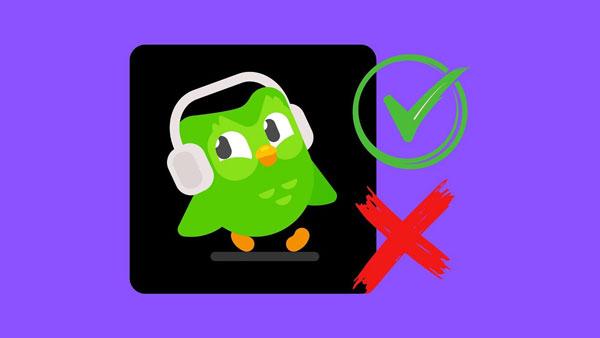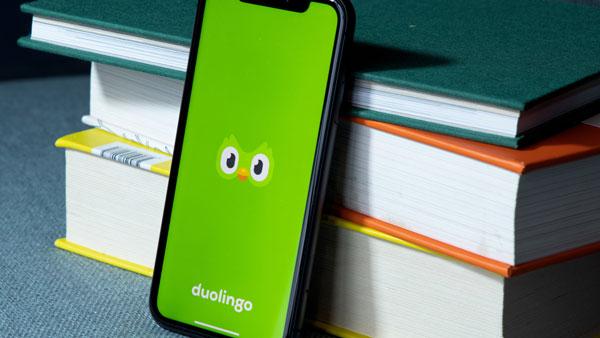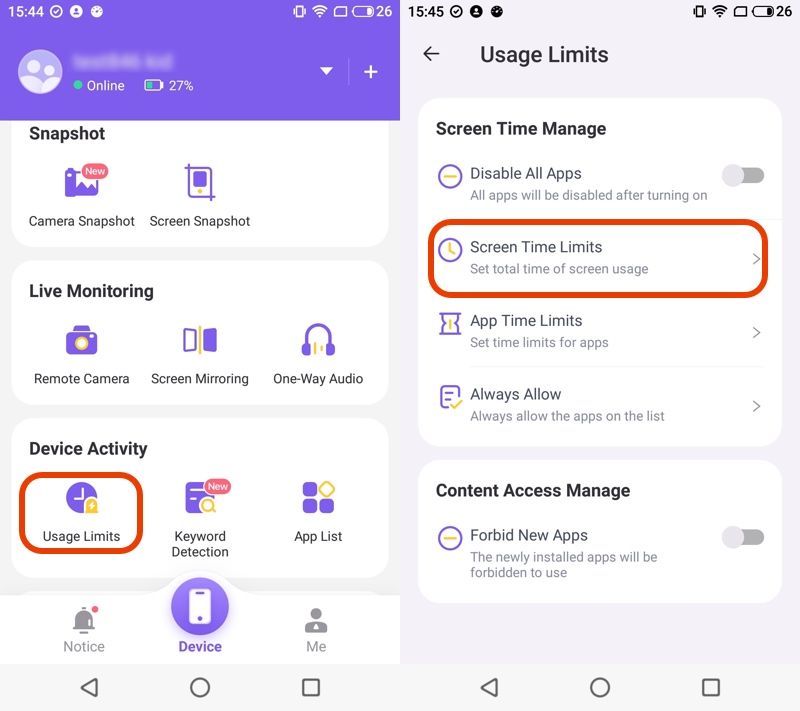As everything is shifting towards digital mode with every new day, language learning has become a digital trend, too. People use to learn different languages out of need or interest. To provide you with a similar service, Duolingo is one of the best language-learning platforms ever, which has garnered billions of users in a short time span.
This Duolingo post will thoroughly cover this novel application with all its specifics, such as features, pros, and cons, and discuss why it is popular, safe, and addictive to users.
What is Duolingo?



“Duolingo is one of the most downloaded applications for studying foreign languages in the world. It allows many people to master a new language easily and profitably.” Established in 2011, Duolingo has and teaches over 30 languages. It is also accumulating students due to a decent system of divisions, tournaments, and levels. It is so absolutely irresistible that it attracts even children and teens to try and delve into it.
Key features of Duolingo
- Bite-sized learner’s objective: A short lesson to learn reading, writing, listening, and speaking is ideal for students.
- Gamification for languageLearning: There were also points streaks and rewards for learners. It aids in further retention and learning.
- Adaptive learning: The app provides an activity but there are short activities that can be altered at will. Hence, it is good for practice.
- Community engagement: This includes being able to chat with other users through a discussion section.
- Duolingo stories: The standing users have reading skills and Duolingo provides an understanding of the language through stories.
- Accessibility: You need not pay something to use it, although some features may be paid for to ensure better usage.



What are the pros and cons of Duolingo?
Pros of Duolingo:
- Free of charge: Free of cost! Yes, there’s a functional free version.
- It is fun: Students are happily accommodated and leisure is made into learning.
- User-friendly: Very clear and organized; fast navigation is not a problem.
- Wide range of languages: Learning more than 30 languages is possible.
- Flexible learning: It does not prevent somebody from learning at their own pace or from handling too many lessons at once.
Cos of Duolingo:
- Content only for beginners: More material on complaint resolution does not help an advanced learner.
- Advertising in free version: The advertising on the free version can also cut the user experience.
- Boring drills: Some students feel that the exercises become boring after-watches.
- Speaking practice is Lacking: Little practice of holding dialogues and learning correct pronunciation.
Is Duolingo free?
Yes! All Duolingo services are free of charge but with some restrictions. In the cost-free variant, all the available courses are provided without charging the students. They can learn any language freely However, it is ad-supported and limits almost every type of usage by providing a certain number of errors.
Duolingo Super is also available as a paid version of the above service. This version entails an ad-free interface, infinite errors with no timeout needed, status offline with the app, and extra add-ons like activity tracking. But if you want slow and steady learning, then the free version is also not bad.



How much is Duolingo super?
“Duolingo Super is also known as Duolingo Plus for the previous version, and this is the premium membership plan within the app.”
Though most countries offer it for $6.99 a month if paid for a year. Duolingo Super offers users several additional perks. It includes powering up their interface by blocking ads, going through numerous hearts to complete more lessons, etc. This subscription is beneficial to users who do not want to be interrupted while learning.
What is Duolingo’s overall purpose?
Duolingo makes people capable of learning new languages overwhelmingly and easily. The program further seeks to assist those who wish to learn new languages without charge. There are more than 30 languages in the offering.
Wherever the target audience is based and whichever the technology used in the Mobile, the application design has been built for every learner at any age. As stated by the Chairman of the Board of Duolingo, the application has all the features necessary for learning a foreign language. It will teach a person this language regardless of where he is located.
Why is Duolingo owl wrinkly?
Those wrinkled areas are the lines and slits on Duo characters that mean to improve the charm and cuteness of the users. Some of these design elements used in Duo were aimed at making the owl feel secure, adorable, and somewhat ridiculous. His large head is worried, bald, smirking, and wears bunny ears.
All these distinctive features of Duo are aimed at enhancing the entertainment factor while learning. That very effect makes Dulingo stand out and creates an endearing image and symbol of the app that people can easily connect with.
How does Duolingo work?
Duolingo considers and solves problems in a way that is effective and interactive, including the use of mobile applications. Such a method is appealing to others because the mobile application has a lot of components that are meant to teach language, speaking, and listening that other methods lack. By using the app’s interface, great chances are that constant language learners will not get bored of using the app. Also, the app is available in its standard form on computers too.



Why is Duolingo so popular?
The phenomenon of Duolingo can also be explained by many factors that have contributed to its rapid popularity since 2011. It is quite popular in circles around language learning applications. It even gained an enormous amount of followers because with the help of Duolingo language learning is so much fun and easier than ever imagined.
Several reasons account for the success of Duolingo:
- Free access: It is the only one in the language learning program market that offers a full-fledged learning experience without spending. Hence, this has made Duolingo very popular worldwide.
- Gamification: Duolingo has a unique way of approaching learning languages, one also gets points, streaks, or rewards. Doing so turns technology into a more attractive way to learn languages. Also, this incorporates the tendency to use the program regularly which increases the chances of developing routines.
- Variety of languages: The third reason that can be attributed to its popularity is that it provides more than 30 languages. For example, Spanish, French, and German, and also less common languages such as Welsh and Hawaiian. This range is rather appealing, especially to people with various educational backgrounds.
- Soft material: Available on computer and mobile gadgets: Duolingo is oriented towards obtaining knowledge from professional as well as from informal sources. In this case, it is possible to engage in learning, regardless of the place. This is an interesting activity that can be done quite comfortably because one has to learn for a relatively short period.
- Community and social features: The application has boards, rewards dispatch, and dashboards that foster a healthy competitive environment for the users.
Is Duolingo good?
Duolingo is a great tool for language learners and provides ample advantages. But, it also has some limitations. So here are the arguments in favour as well as against:



Positive sides of Duolingo app
- No charge: Duolingo, without registration, offers a sufficient amount of language courses without any payment, so everybody can use it. This free line of the application encourages people to use it and helps it gain a huge market.
- Engaging and fun: It is like a game with points, streaks, and rewards, which is interesting. So, the Users are motivated to come all the most often. It makes learning an activity, not a boring one.
- User-friendly interface: Language instruction applications like Duolingo are quite advanced,, however, opening the application requires minimal technological knowledge ranging from the age of teenagers and above to its use without any challenges.
- Variety of languages: The Duolingo language section contains more than 30 with some other extra less known and so this appeals to ordinary lots.
Negative sides:
- Limit in Magnitude: Duolingo is efficient, especially in the early and middle levels of language acquisition. However, it may not be particularly helpful for someone who wishes to take their language mastery further. This is due to the generalization that the app imposes – it has a basic balance comparing the ability to use the app and the ability to communicate with a good but basic understanding of English.
- Time-consuming Activities: To learn something new every time a user has to go through every lesson and some lessons will be Sisyphean. A majority of such users end up disappointed by the prospect of wasting time.
- Ads in Free Version: G For instance, in this version, there are some commercials. Thus, it becomes hard even to read and understand especially because the focus is split.
- Limited Cultural Context: However, in mastering the language, the application is largely devoid of any cultural aspects and cultural and language specifics.
Is Duolingo worth it?
Duolingo is worth it for many users, especially for beginners and casual users. In its free version, the website offers a lot of languages to study. It makes it useful to people for who learning the language is a new thing. Besides, there is flexibility in that the learners can move forward with learning and perform activities per one schedule.
As we already discussed, Duolingo may have some disadvantages for those who desire to learn the language at an advanced level or acquire a deeper level of fluency. Though the free version is helpful, it comes with annoying ads. So, you might have to pay for the premium subscription for convenience.’
As we already discussed, Duolingo may have some disadvantages for those who desire to learn the language at an advanced level or acquire a deeper level of fluency. Though the free version is helpful, it comes with annoying ads. So, you might have to pay for the premium subscription for convenience.



But if we weigh its bright and dark sides, there is no hesitation in saying that it is very interesting and easy-to-use app. For advanced learners, this application is recommended in combination with other relevant learning methods.
Is Duolingo safe?
Of course, Duolingo is safe to use. While designing the application, the security of the users was kept in mind and the application adhered to the policies of data privacy. Following is the assessment of the safety measures taken by the application:
- Security of Data: Duolingo includes a system that cover all the risks to the security of user information. The application works according to data protection regulations including GDPR for users based in Europe. The app does not view human beings in the form of metrics and does not collect more than what is absolutely necessary and reasonable for service provision.



- Design consideration straight to the children: Children/elderly user groups are logged into the system and it corresponds to the requirements of such groups. The content of the game is sensitive to the age of the users and does not include any mafia, gore, or nudity, but is purely educational.
- Parental features: Concerning the target age group for the learners, in relation thus Duolingo would not be able to implement specific parental control features.
- Protective guidelines: Sharing of user-generated content is done through the use of encryption technologies that protect content and no outsider is able to access it.
- Community features: The app like all the apps these days has social activities such as the rank of the teams or discussions. However, the content was kept such that only healthy and constructive perspectives were posted and the unhealthy ones were avoided entirely. Still, some users will have to make efforts more sorely than others. Kids are advised not to disclose app contacts to the global space for safety reasons.
Most importantly, Duolingo is free of any risks and assures that the learners are in a safe and proper study mode.
Is Duolingo addictive?
Yes, Duolingo can become pretty addictive. The marking system that offers points, maintenance of streaks, and collecting rewards creates a feeling of success, which inspires the users to come back. The app’s structure also promotes daily learning; hence, one can easily become a ‘learn every day’ addict.



Many people using the app realize that they are on it for longer than they had planned. Because, they want to stay on top of their progress and the day’s goals. Immersing oneself in lessons and seeing one’s progress also explains why one can develop an unintended study habit.
Why Duolingo is addictive?
There are a few main particular reasons why Duolingo can be very addictive.
- Fun: Duolingo uses the inclusion of points, streaks, and rewards. These elements lead to a feeling of achievement and competition, and members log in each day to retain their streaks and obtain more points.
- Goal-based learning: Duolingo ensures that members track their progress and improvements visibly and display their feedback score on each task performed after completion. This sense of ‘moving ahead’ motivates the users to keep learning.
- Short Lessons: The learning fragments are well divided, so practice cannot be neglected. A user can finish a lesson within a short span, which helps encourage more use and the desire to do “just one more” exercise.
- Rewards and challenges: Duolingo contains different in-app rewards and challenges, like badges or leaderboards. These elements appeal to competitiveness and need to be appreciated by everyone.
How to screen time Duolingo addiction on your kid’s phone?
To address and contain Duolingo addiction on a child’s device, using a parental control app like FlashGet Kids is crucial. Here’s how to use FlashGet Kids for screen time management:
- Get on your device’s Google Play Store or Apple App Store. Search for “FlashGet Kids” and install the application.
- Install FlashGet Kids for child app on your kids device,
- After installing and starting the application, an account must be configured according to the onscreen prompts.
Set up screen time limits:
Step 1. In the dashboard, go for “Usage Limits”> “Screen Time limits” and then tap on “Add Limit.”



Step 2. Here, you have to choose the limit type “Available Time limits” (the time the child can use the screen) and “Timespan limits” ( the time the child can’t use the screen).
Step 3. Now, you must name the limit by entering the limit settings. That’s all!
7) FAQs
Does Duolingo have inappropriate content?
Duolingo is not inappropriate. All its courses and materials are suitable for all people including children.
Why do you lose hearts in Duolingo?
You lose hearts in Duolingo if you make mistakes during the lessons. Hearts are limited to negative inputs and encourage as much practice as possible.
How did I get unlimited hearts on Duolingo?
The only way to unlock the heart system which limits user actions is to purchase a Duolingo Super subscription which removes the restrictions in terms of hearts allowing you to commit statelessly and not wait and not lose.
What country uses Duolingo the most?
The country that uses Duolingo the most is the USA. Because of the huge number of HAP users and their enthusiasm for studying languages, the sheer number of active Duolingo users is dramatically high.

